Series Engaging Students with "Productive Struggle": Learning from Mistakes: Linear Equations
Math.A.REI.1
| Common core State Standards
- Math: Math
- A: Algebra
- REI: Reasoning with Equations and Inequalities
-
1:
Explain each step in solving a simple equation as following from the
equality of numbers asserted at the previous step, starting from the
assumption that the original equation has a solution. Construct a
viable argument to justify a solution method.
Math.Practice.MP2
| Common core State Standards
- Math: Math
- Practice: Mathematical Practice Standards
-
MP2: Reason abstractly and quantitatively.
Mathematically proficient students make sense of quantities and their relationships in problem situations. They bring two complementary abilities to bear on problems involving quantitative relationships: the ability to decontextualize--to abstract a given situation and represent it symbolically and manipulate the representing symbols as if they have a life of their own, without necessarily attending to their referents—and the ability to contextualize, to pause as needed during the manipulation process in order to probe into the referents for the symbols involved. Quantitative reasoning entails habits of creating a coherent representation of the problem at hand; considering the units involved; attending to the meaning of quantities, not just how to compute them; and knowing and flexibly using different properties of operations and objects.
Math.Practice.MP3
Common core State Standards
- Math: Math
- Practice: Mathematical Practice Standards
-
MP3: Construct viable arguments and critique the reasoning of others.
Mathematically proficient students understand and use stated assumptions, definitions, and previously established results in constructing arguments. They make conjectures and build a logical progression of statements to explore the truth of their conjectures. They are able to analyze situations by breaking them into cases, and can recognize and use counterexamples. They justify their conclusions, communicate them to others, and respond to the arguments of others. They reason inductively about data, making plausible arguments that take into account the context from which the data arose. Mathematically proficient students are also able to compare the effectiveness of two plausible arguments, distinguish correct logic or reasoning from that which is flawed, and--if there is a flaw in an argument--explain what it is. Elementary students can construct arguments using concrete referents such as objects, drawings, diagrams, and actions. Such arguments can make sense and be correct, even though they are not generalized or made formal until later grades. Later, students learn to determine domains to which an argument applies. Students at all grades can listen or read the arguments of others, decide whether they make sense, and ask useful questions to clarify or improve the arguments.
Save to My Resources
PLEASE CREATE A NEW ACCOUNT OR LOG IN TO ACCESS THIS CONTENT
Enjoy your first video for free. Subscribe for unlimited access.
Have questions about subscribing?
Click Here to learn more about individual subscriptions.
Click Here to learn more about School and Institution access.
Discussion and Supporting Materials
Thought starters
- What do students learn from collaboratively viewing student work samples?
- How would you decide to group the students for this activity?
- Why is it important for the groups to have guiding questions for the activity?
School Details
Turkey Foot Middle School3230 Turkeyfoot Road
Edgewood KY 41017
Population: 1082
Data Provided By:

Teachers
Susie (Susan) Morehead
Newest
|
4 MIN
|
5 MIN
|
5 MIN
UNCUT CLASSROOMS
| TCHERS' VOICE
English Language Arts
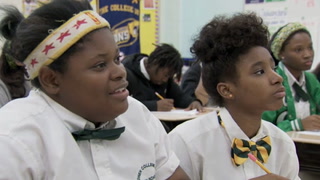

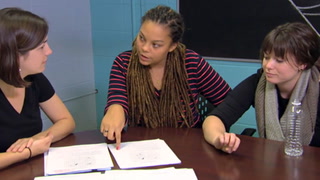

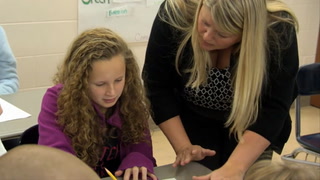
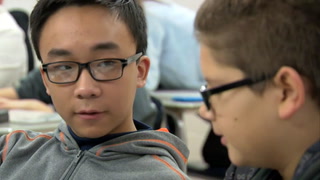
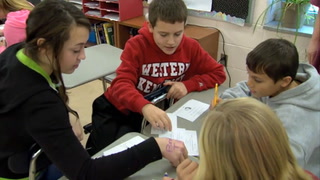
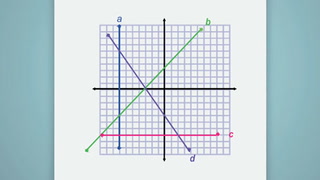
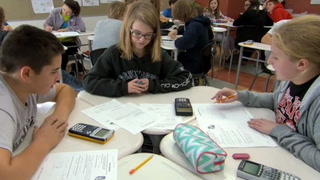
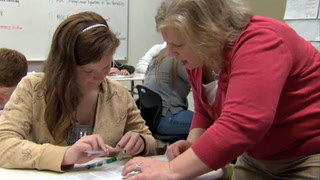










13 Comments
Aundrea Gamble Apr 22, 2020 5:01pm
1. What do students learn from collaboratively viewing student work samples?
The students learn how othere students think. Every student learns differently but it also allows the students to become teachers and correct people's mistakes. By giving peer evaluations it helps the students make their own work better.
2. How would you decide to group the students for this activity?
I would group the students in groups of four and put two students who are strong in that area and two students who struggle in that area and have them work collaboratively.
3. Why is it important for the groups to have guiding questions for the activity?
It is important for the groups to have guiding questions because it helps them process each step through the problem and it also helps with communicating how they would get the answer.
dawn Amodio-Pagano Mar 14, 2018 5:01pm
Jon Beyle Nov 21, 2016 3:12pm
Jeane Brumley Nov 21, 2016 3:12pm
Geraldine Fleming Oct 4, 2016 10:40pm